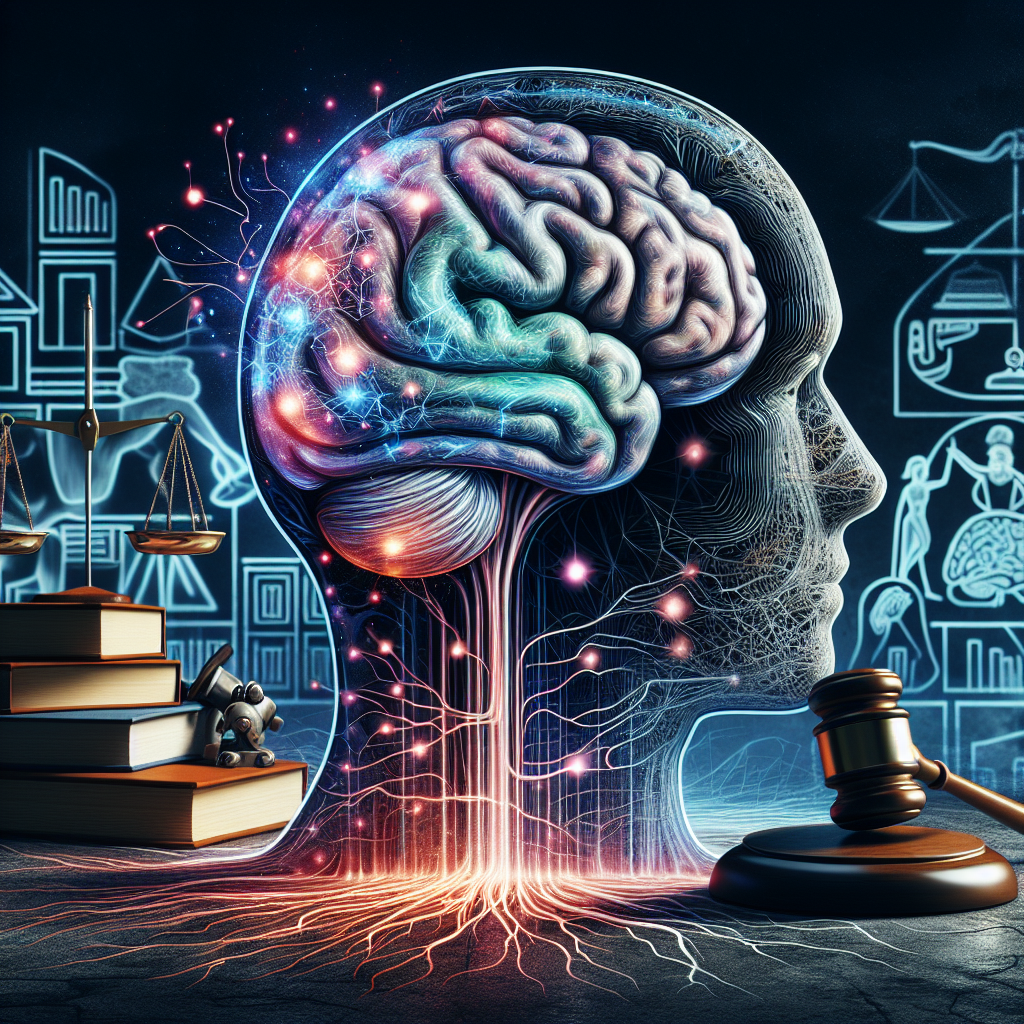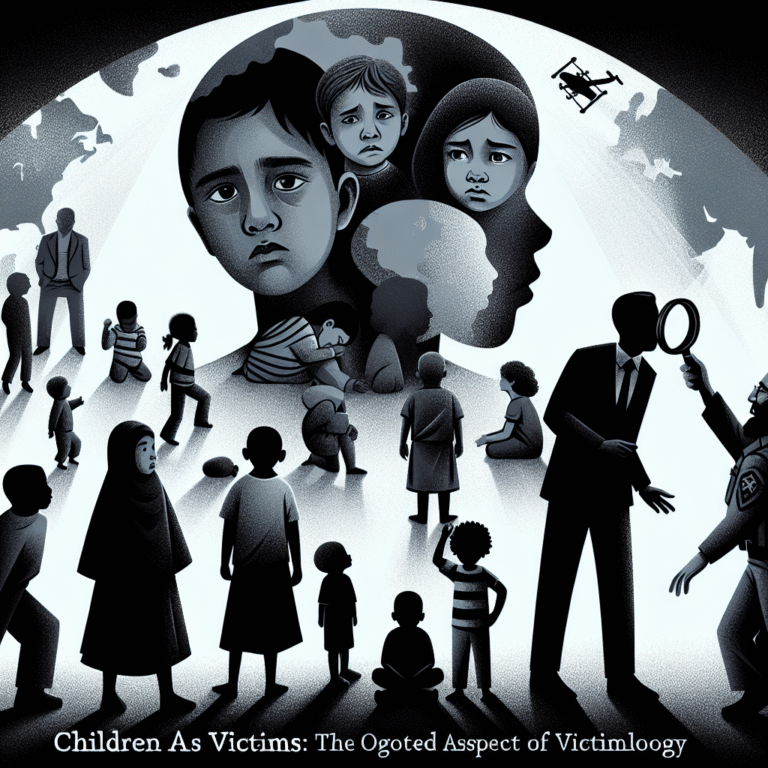
Introduction
In the rapidly evolving landscape of criminal justice, the intersection of mind and law has emerged as an essential focus for practitioners, scholars, and the public alike. With advances in neuropsychological forensics, we find ourselves at a fascinating crossroads where cognitive science meets legal principles. Understanding how neurological and psychological factors influence behavior is not just an academic pursuit; it has profound implications for justice, rehabilitation, and societal safety.
This article delves deep into The Intersection of Mind and Law: Understanding Neuropsychological Forensics, exploring how the insights garnered from the human mind can shape legal outcomes, influence court rulings, and impact the lives of individuals involved in the justice system. Buckle up, as we embark on this enlightening journey through the realms of psychology, neuroscience, and law.
What is Neuropsychological Forensics?
Neuropsychological forensics is a specialized field that examines the cognitive and emotional aspects of individuals involved in legal proceedings. It combines elements of psychology, neurology, and the law to provide insights into how brain function affects behavior and decision-making.
Key Areas of Focus
- Competency Evaluations: Assessing whether an individual understands the charges against them and is fit to stand trial.
- Insanity Defense: Analyzing mental health conditions that may absolve a defendant of criminal responsibility.
- Risk Assessment: Evaluating the likelihood of reoffending, particularly in violent crimes.
- Witness Credibility: Understanding how cognitive biases and memory may influence testimonies.
Understanding these components is vital as they highlight the pivotal role mental processes play in legal matters.
Historical Context
Early Developments
The roots of neuropsychological forensics can be traced back to early psychological theories and practices in the 19th and 20th centuries. Figures like Sigmund Freud and Jean Piaget began to correlate psychological development and emotional functioning with behavior. However, it wasn’t until advancements in neuroimaging techniques, such as fMRI and PET scans, that the connection between the physical brain and legal accountability became more apparent.
Case Study: The McNaughten Rule
One of the earliest instances where psychological insight influenced law is the famous McNaughten Rule from 1843. Daniel McNaughten, suffering from delusions, killed a government official, believing he was following orders from God. His subsequent trial raised questions about mental illness and criminal responsibility, ultimately leading to the establishment of the insanity defense in many jurisdictions.
| Year | Case | Significance |
|---|---|---|
| 1843 | McNaughten | Established the insanity defense principle |
| 1981 | Hinckley | Refined the standards for insanity defenses |
| 2013 | Connecticut v. Topsy | Introduced neuropsychological evidence in court |
Modern Implications
Today, the integration of neuroscience into legal proceedings has led to groundbreaking developments, such as incorporating neuroimaging evidence to support defenses and assessments.
Understanding the Brain: Key Concepts in Neuropsychology
Neurological Factors Influencing Behavior
Neuropsychology examines how brain structures relate to specific cognitive functions. Conditions like traumatic brain injury (TBI), epilepsy, or psychiatric disorders can significantly impair judgment and impulse control. Recognizing these influences can help legal professionals navigate cases more effectively.
Psychological Assessments
Psychological evaluations, often conducted by forensic psychologists, complement neurological assessments. Tools such as the MMPI (Minnesota Multiphasic Personality Inventory) and WAIS (Wechsler Adult Intelligence Scale) provide critical insights into an individual’s mental state and cognitive abilities.
Case Study: Brain Scans as Evidence
In a groundbreaking case, United States v. Kopf (2014), brain scan evidence was presented to illustrate the defendant’s mental incapacity at the time of the crime. The court allowed the testimony of neuropsychologists who explained how brain activity directly related to decision-making processes, thereby impacting the final verdict.
The Role of Neuropsychological Forensics in Legal Outcomes
Competency Assessments
Determining competency remains one of the most critical aspects of legal proceedings. In Indiana v. Edwards (2007), the U.S. Supreme Court ruled that a defendant could be barred from self-representation if they could not competently assist in their defense due to mental illness. Neuropsychological evaluations were crucial in assessing that competency.
Insanity Defense
The insanity defense, often a controversial topic, hinges on the intersection of mind and law. Courts now increasingly rely on neuropsychological insights to ascertain whether a defendant comprehended the nature of their actions during a crime. In several high-profile cases, including John Hinckley Jr., such defenses led to debates over mental health as a determining factor in culpability.
Risk Assessment
Predicting the likelihood of reoffending is crucial for parole decisions and public safety. Neuropsychological assessments contribute to comprehensive risk evaluations, allowing for more informed judicial and parole board decisions. Various scales, such as the VRAG (Violence Risk Appraisal Guide) and HCR-20 (Historical, Clinical, Risk Management-20), incorporate neuropsychological findings to assess risk factors.
Ethical Considerations
Bias in Neuropsychological Evidence
While neuropsychological forensics contributes immensely to legal proceedings, concerns about bias exist. How are these assessments interpreted? Are certain neurological conditions unfairly stigmatized in the courtroom? Ethical evaluations call for standardized methods and rigorous training for professionals involved.
Privacy Concerns
Neuropsychological assessments often require sensitive personal data. Hence, ensuring the protection of individual rights while using these evaluations in legal contexts is paramount.
Case Study: Right to Privacy
In Griswold v. Connecticut (1965), privacy rights were extended to personal decisions, laying a foundation that influences the discussion on the right to keep neuropsychological evaluations confidential.
Society’s Perception of Neuropsychological Forensics
Public Awareness and Education
As public fascination with crime and psychology grows, so does the demand for understanding neuropsychological forensics. Documentaries, podcasts, and books have begun to bridge the knowledge gap, increasing awareness of how the brain can influence criminal behavior and legal outcomes.
Media Influence
Media portrayals often romanticize the intersection of mind and law, yet they can also perpetuate misconceptions. Sensationalist stories may obscure the complexities involved in forensic neuropsychology, leading to a more simplistic view that overlooks critical ethical concerns.
Future Directions in Neuropsychological Forensics
Technological Advancements
As neuroscience advances, so too will its applications within the legal realm. Innovations in neuroimaging techniques and artificial intelligence may provide even deeper insights into human behavior and decision-making.
Legislative Changes
In light of growing knowledge about the brain and behavior, potential changes to laws governing mental health defenses may arise. As more jurisdictions recognize the importance of neuropsychological forensics, we can anticipate evolving standards that reflect a better understanding of mind-law intersections.
Training and Education
Continued professional development for legal practitioners surrounding neuropsychological assessments will be essential. There’s a growing need for interdisciplinary collaboration among legal experts, neuropsychologists, and mental health professionals.
Conclusion
The intersection of mind and law is a dynamic and vital field that holds the promise of a more nuanced understanding of human behavior within the legal system. As we’ve explored, The Intersection of Mind and Law: Understanding Neuropsychological Forensics not only informs legal theory and practice but also shapes societal attitudes toward justice and mental health.
As medical science continues to evolve, embracing the wisdom derived from neuropsychological insights becomes imperative. The quest for justice demands that we heed the lessons of the mind. The more we understand about how mental processes impact behavior, the more effectively we can navigate the labyrinth of law.
FAQs
-
What is neuropsychological forensics?
Neuropsychological forensics is the application of psychological and neurological insights to legal matters, particularly in assessing competency, understanding mental illness, and evaluating risk factors. -
How does neuropsychology influence legal outcomes?
Neuropsychological insights can shape decisions on competency to stand trial, eligibility for the insanity defense, and assessments of reoffending risk, profoundly impacting verdicts and sentencing. -
Are there ethical challenges in using neuropsychological evidence in court?
Yes, concerns about bias, accuracy, and privacy pose significant ethical challenges. Ensuring that assessments adhere to rigorous standards is critical for maintaining fairness in legal proceedings. -
Can brain scans provide reliable evidence in court?
Brain scans can enhance our understanding of a defendant’s mental state, but they must be interpreted cautiously and are often used alongside other psychometric assessments. - What role does public perception play in neuropsychological forensics?
Public understanding shapes the discourse around mental health in legal contexts. Media portrayals can both educate and misinform, highlighting the need for accurate representations of neuropsychological findings in criminal cases.
In exploring The Intersection of Mind and Law: Understanding Neuropsychological Forensics, we unearth not only the intricate tapestry that weaves these fields together, but also the critical implications for our society’s approach to justice and mental health. Knowledge is power, and armed with this understanding, we can advocate for a legal system that reflects both compassion and accountability.
















